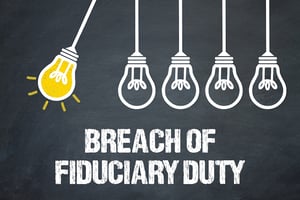Court Clarifies Damages for ESOP Fiduciary Breach
 A business owner may have the best of intentions when setting up an employee stock ownership plan (ESOP), but if the ESOP is induced by the owner or other fiduciaries to overpay for the company’s stock, a court can order those fiduciaries to pay damages. A key question in these cases is how to quantify them.
A business owner may have the best of intentions when setting up an employee stock ownership plan (ESOP), but if the ESOP is induced by the owner or other fiduciaries to overpay for the company’s stock, a court can order those fiduciaries to pay damages. A key question in these cases is how to quantify them.
Alleging Breach of Fiduciary Duties
The issue of quantifying damages arose in a recent case where a CEO sold his 52% share of the company to an ESOP for $406 per share in December 2010. Before the sale, the ESOP already owned 48% of the company. An annual appraisal conducted in 2009 determined that the fair market value for shares of the company was only $285 – a difference of nearly 30% from the price the ESOP paid.
The U.S. Department of Labor (DOL) sued the CEO and the transaction trustee that represented the ESOP and acted as its fiduciary. The DOL claimed they’d violated the Employee Retirement Income Security Act by approving the ESOP’s purchase of the shares at an inflated price. Specifically, the DOL alleged that the trustee had violated its duties of prudence and loyalty. The DOL also argued that the CEO was jointly liable for the ESOP’s losses as a knowing participant in a prohibited transaction and as co-fiduciary to the ESOP.
Calculating Damages
At trial, the DOL’s expert found the ESOP had overpaid by $11.5 million. The defendant’s expert estimated an overpayment of about $5.5 million. Which expert was correct?
The court outlined two “viable methods” for calculating damages in the case:
- Using a critique by the defendant’s expert of the opposing expert’s calculation, the court could calculate a discrete damages amount for each alleged error in the annual appraisal of company stock and adjust the calculation accordingly.
- The court could credit the DOL expert’s correction of the annual appraisal.
After the court’s adjustments, the first approach estimated about $7.8 million in damages. The second approach, after adjustments, resulted in roughly $6.5 million in damages. The court found that both methods were imperfect, yet reasonable, methods for calculating damages. Ultimately, it opted for the second approach.
Building Your Case
Though the trial court in Pizzella wholeheartedly accepted the plaintiff’s liability arguments, it made some adjustments to the DOL’s position on damages. This ruling clearly demonstrates the importance of retaining qualified experts who can build a solid foundation for damages calculations.










